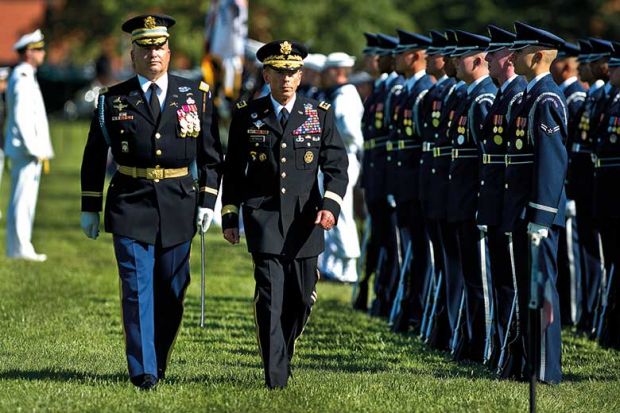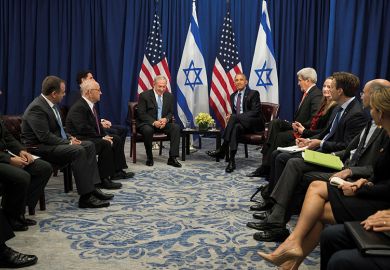Command, argues Anthony King, is as important to military success today as it was in the French Revolutionary and Napoleonic Wars or the major wars of the 20th century. The problems facing commanders have, however, multiplied with the increasing complexity of warfare, while the vast amount of information available can be an obstacle as well as an asset. While the fundamental aim of commanders in the 21st century remains the defeat of the enemy by superior organisation and deployment of their forces, the experiences of recent wars have transformed the nature and methods of command in the armies of Western powers.
This perceptive and important book explains and analyses the changes to the structure and methods of command, the configuration of forces and mission management of particularly the US and British armies. King’s study is the result not only of archival research, but of something close to an embedded status within army divisions and discussions with their commanders and staff. Although his emphasis is on contemporary strategic and tactical thinking, he does not neglect the more distant background and developments in military thinking during the wars of the 20th century.
It is the mistakes in the Anglo-American campaigns in Afghanistan and Iraq that have impelled a reassessment of command. The main public disquiet in both countries in the aftermath of the Iraq War did, of course, centre on the failings of political leadership, with George W. Bush and Tony Blair blamed for launching what came to be seen as an unnecessary war on the basis of inaccurate information. This disquiet reached its apogee in Britain with the publication of the Chilcot report in 2016. As King points out, however, “British military commanders were also reprimanded for their failure to respond to the changing situation in Basra” – although he may well underestimate political interference in the conduct of operations.
While Gordon Brown described the withdrawal from the city to a nearby airfield, which left its population at the mercy of Iranian irregulars, as a “pre-planned and organised move”, the then British commander in southern Iraq later commented that his actions were constrained by “political considerations in London”. Equally, both Bush and Barack Obama have been blamed for the precipitate withdrawal from Iraq after General David Petraeus’ “surge” had had some success in improving the security situation.
Nevertheless, while both the Afghan and Iraq campaigns met with initial success, the subsequent attempts to stabilise the two countries have to be considered as military as well as political failures and this has impelled a reassessment which has led to the major changes that the book describes.
The focus of this study is the divisional level of command. The army division was the basic formation from 1916, when its first command regime emerged in response to industrial warfare, and reliance upon it persisted until shortly after the end of the Cold War. It was then that the brigade, which seemed more suitable in terms of new digital communication systems and associated weaponry for the global rapid reaction forces needed in the post-Cold War strategic environment, came into favour.
“The sheer size of the division – with its 20,000 troops – seemed otiose,” writes King, compared with brigades and their complements of 5,000 soldiers. Divisions had made sense when the prospect was the defence of western Europe against a major power, but brigades seemed better suited as the optimal formation for the wars that were now expected. Yet brigades also had shortcomings that were revealed by the wars of the new century. Although they could coordinate air, artillery and missile support, a brigade had, claims King, too small a headquarters “to coordinate information operations, indigenous security forces, political engagement with local leaders or, decisively, to sustain a long campaign”; hence the renaissance of the division and the reorganisation of its command.
Yet the central change, he argues, is towards a new and highly professional practice of command in which commanders share responsibility and decision-making authority, integrating subordinates, staff and partners into the process of leadership. The idea of the charismatic general exercising top-down leadership is, he suggests, obsolete and being replaced by a system of “collective command” characterised by devolution of authority, networking and joint decision making. Such a development is far from uncontroversial. Although King stresses its merits, he recognises that many successful generals, such as James Mattis and Petraeus in the US, remain far from convinced that, although an integrated command is essential, it can replace leadership, and insist that the commander retains ultimate and exclusive authority to make major decisions. The big question is whether the purpose of collective command is indeed to enable the commander to make better decisions or to delegate authority to the collective.
Here the whole question of responsibility becomes crucial. Can a collective, even with the best information and a forward plan with decision points built into it, take ultimate responsibility and does a system with pre-planned decision points mean that a command can be dictated by algorithms? A more collaborative model seems apposite for the age of advanced information technology and cyber warfare, but in the end the commander has to take responsibility. The methods of command and views of Mattis and the British general Nicholas Carter, the latter one of King’s main sources, are particularly pertinent.
Mattis was commandant of the Marine Corps, almost an army in itself with long experience of integrated command, its own ships, supplies, artillery, tanks and even aircraft. The corps was perhaps the perfect prototype for the modern division and Mattis devolved battlefield authority in Iraq and Afghanistan as far as non-commissioned ranks, but insisted on adherence to his planning and his ultimate authority. Carter, who commanded Regional South in Afghanistan, had (necessarily, as he commanded a diverse multinational force) to be collaborative and diplomatic and devolved decision making to the extent that his deputies “acted for him – or rather as him – when he was not present”, but he was still ultimately “the boss”.
This is a well-researched and timely book, which demonstrates the vitality of the academic study of military history and strategic studies. As King recognises, it also has limitations since its scope is confined to the command reforms being instituted in the major armies of the Nato Alliance, and air forces and navies are only touched on. Inevitably, it raises the wider issue of the presumptions on which military planning are based: strategists have sometimes been seen as preparing to fight the last war more efficiently and then finding that the wars they have to fight are very different. Recent conflicts were essentially asymmetrical in that the enemies had relatively weak conventional forces and the allied air power was dominant, so the lessons learned in manoeuvre operations and counter-insurgency may well not be relevant to a future war.
Present operational planning in both the US and its allies assumes the continuity of Nato and its American leadership, which is not as certain as it was. If the danger of war with an aggressive Russia suggests a return to the defence thinking of the Cold War period, it is evident that US strategic concerns have been moving towards the Pacific. Perhaps, military planners should be considering current Chinese policies, with their elision of “soft power” and military preparations, and be reading Sun Tzu’s The Art of War. Although 2,500 years old, it remains a valuable source for contemporary Chinese strategy.
A. W. Purdue is a visiting professor in history at Northumbria University.
Command: The Twenty-First Century General
By Anthony King
Cambridge University Press
504pp, £19.99
ISBN 9781108700276
Published 28 January 2019
The author
Anthony King, chair of war at the University of Warwick, was born in Melbourne, Australia but brought up in Essex. Although unsure why he decided to study archaeology and anthropology at the University of Cambridge, it proved a formative experience: “In my first week, I was asked to read Marcel Mauss’ The Gift and to write an essay on it. That work changed my perception of how it was possible to study society – indeed, it made me aware of the importance of specifically social factors for the first time…The social group remains a central theme in my most recent work on military command.”
Although he has acted as an adviser and mentor to both the British Army and the Royal Marines, King believes that he has still been able to “retain academic distance…My interlocutors understand my independence and seem to accept that I will sometimes take positions on military affairs with which they do not agree. [My role as an adviser] has allowed me to gain a detailed and accurate understanding of the armed forces and military operations, which is not always easy for a civilian but which is essential to any serious sociological investigation.”
Today, in King’s view, Britain’s army “is too small and lacks critical equipment to fulfil the role specified for it in defence policy”. If the UK leaves the European Union with an agreement, “these issues will remain but are unlikely to become significantly worse”. A no-deal Brexit, on the other hand, might well undermine “security and defence relations with EU partners based on decades of trust”. The army might also be called on to quell “significant civic disorder in Northern Ireland, Scotland and, eventually, inner-city England”, although “whether [it] can recruit and retain personnel for missions of this type is an open question”.
Matthew Reisz
POSTSCRIPT:
Print headline: Soldiering on in the modern era
Register to continue
Why register?
- Registration is free and only takes a moment
- Once registered, you can read 3 articles a month
- Sign up for our newsletter
Subscribe
Or subscribe for unlimited access to:
- Unlimited access to news, views, insights & reviews
- Digital editions
- Digital access to THE’s university and college rankings analysis
Already registered or a current subscriber?








